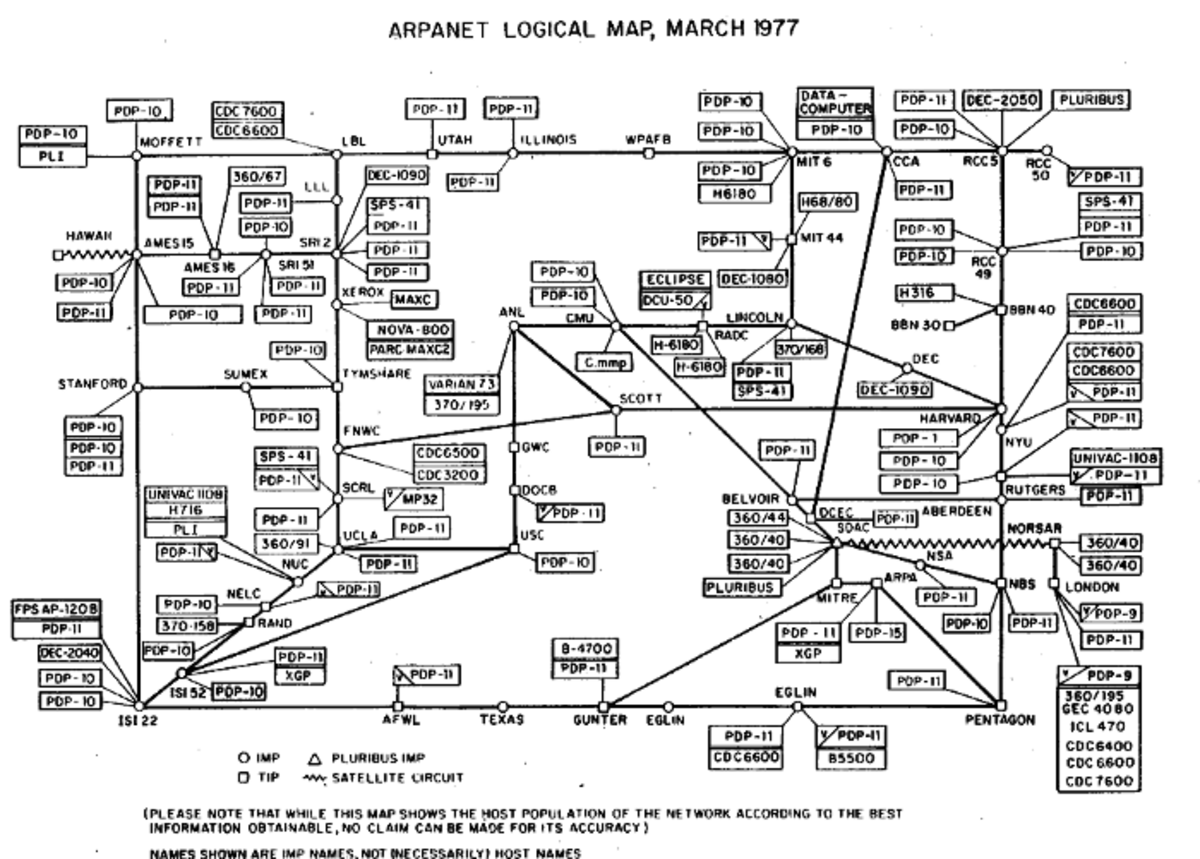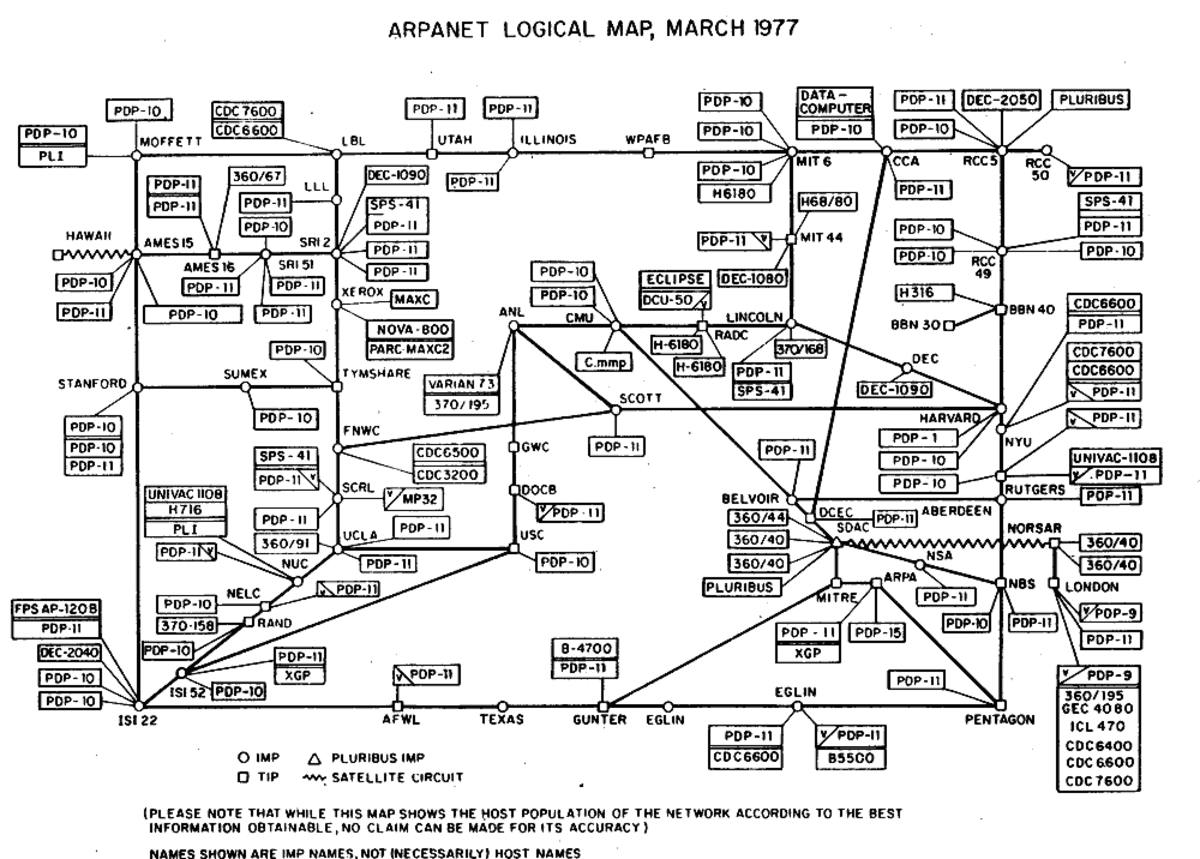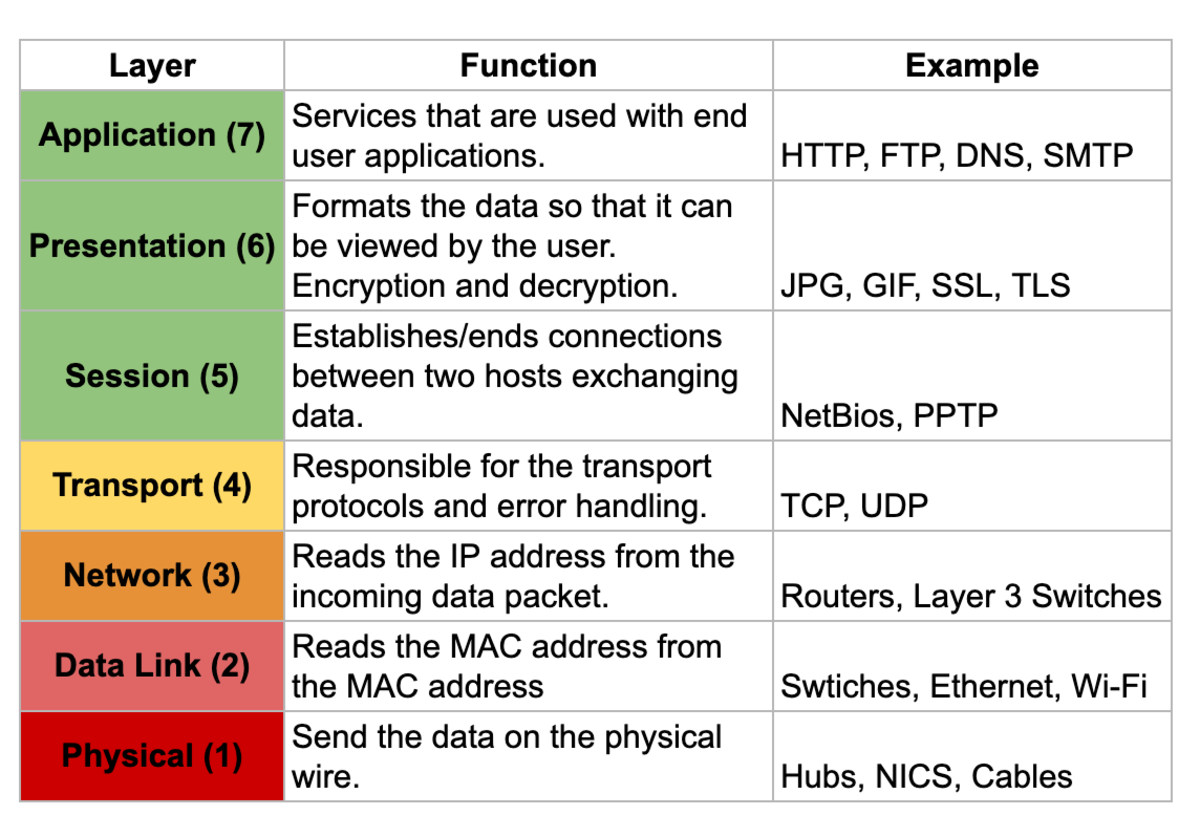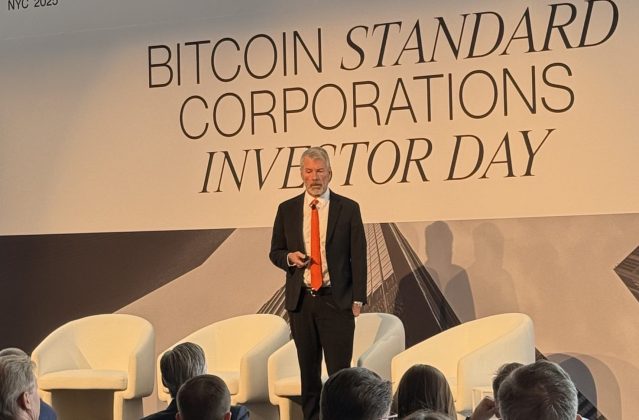
ARPANET’s First Mark Into Networked Computing
Created in February 1958, the Advanced Research Projects Agency (ARPA) was a response to the Soviet launch of Sputnik 1, the first artificial Earth satellite, to research and develop projects in technology and science beyond direct U.S. military applications.
Bob Taylor, an ARPA computer scientist, convinced a colleague to support a research project using funding from a ballistic missile defense program. Following three years of research, the ARPANET project was launched as the first network to connect two geographically-distinct computers.
On October 29, 1969 at 10:30 p.m. PT, the first successful message, “LO,”was sent from UCLA in Los Angeles to Stanford University in Silicon Valley. The message was supposed to be ‘“LOGIN”’ but the system crashed. Over seven years later, Queen Elizabeth II was sending her first email from a computer installed in the U.K.
Unbeknownst to most, ARPANET was morphing into a small but fast-growing global communication network.

Source: Wikimedia
Rising Computer Network Protocols
The ARPANET was the first public implementation of TCP/IP, two major protocols that now form an integral part of the Internet Protocol Suite. Taken together, this suite constitutes what we know as “the internet,” the global interconnected network that hundreds of millions of humans use daily without ever being aware of it. As additional computer nodes joined the ARPANET in different countries, novel technologies were developed to make the growing network more usable, most notably through standard network protocols.
Public computer protocols were created to govern how data is created, exchanged and interpreted between clients and servers on the same interconnected network, including Simple Mail Transfer Protocol (SMTP) to send and receive emails, File Transfer Protocol (FTP) to exchange and read files or Hypertext Transfer Protocol (HTTP) to structure and display web pages that we browse today.
HTTP is one of the most well-known public protocols. It turned ARPANET into the World Wide Web that is now commonly called the internet or the web and established a standard for computers to communicate on the application layer of the internet, having built on other layers of public protocols and open-source technologies.
The Internet's Onion Shape
The internet is built in layers, first abstracted in a framework called the Open Interconnection System (OSI) model, which was later reinterpreted by a simpler version based on the TCP/IP architecture. The OSI model is a logical construction that defines network communication used by various computer systems that interact with each other.
As the internet morphed into a more sophisticated global network of computers, the OSI model was published to help decouple seven distinct layers of public protocols useful in the creation, exchange and interpretation of data flows.
As a hierarchical system, public computer network protocols coordinate how data moves across the internet's seven layers. Each layer is solely responsible for performing assigned tasks and transferring completed tasks to the next layer for further processing.
This clear specialization ensures performance, reliability and scalability of the internet.

Source: Cloud Scanner
The internet is a multi-layered global distributed network of computers that we use every day for many things without ever questioning its existence. Though only 20 years old, the internet powers an immense amount of trades between an ever-growing number of consumers, companies and nations, accounting for roughly $28 trillion in 2016.
Long before Amazon was a thing, in 1972, students from Stanford and MIT conducted the first ever online transaction using ARPANET. The first good ever sold on the internet was marijuana. Many projects followed as commercial and academic attempts to create electronic cash making commerce native on the internet. All incommensurably failed from the late 1980s to the early 2000s, including B-money, Digicash, Hashcash and bit gold.
Technology capacity limits, regulatory hurdles and centralization particularly prevented mainstream digital currencies from ever taking off.
The Missing Monetary Layer Of The Web
Regardless, for users to directly trade with geographically-distinct neighbors on the internet, one essential component has been absent until now: a monetary layer to store, exchange and measure value natively on the web without being required to use legacy financial institutions.
Over two decades, failed attempts at creating digital money paved the way to a reckoning and the silent launch of an open-source software project on a cypherpunk mailing list, back in 2008. Satoshi Nakamoto was the pseudonym of an unknown individual or group who posted about the Bitcoin project with a link to the white paper explaining how it works.
The project was initially understood as yet another doomed attempt to construct a digital currency by the disillusioned cypherpunk community. And without anyone’s permission, Bitcoin slowly emerged and diligently grew to become adopted by a small group of computer researchers, cryptographers and engineers curious to decipher the technology.
Fast forward 11 years: Bitcoin proved to be resilient to attacks, bugs and serious technical and political crises. There are hundreds of developers actively working on this project worth more than $200 billion in monetary base. Bitcoin’s latest running software (0.20.0 released in June 2020) has created and maintained the world’s first form of absolute digital scarcity. Without ever breaking the integrity of its underlying ledger, it does not rely on trusted third parties to verify that everything is running well.
Everyone and anyone can take the role of verification on the Bitcoin network. This had never been achieved in the past. Bitcoin solved a multi-decades long problem in computer science called the Byzantine Generals’ Problem, which highlights the complexity of coordinating untrusted nodes in a distributed network.
LNP/BP As Public Network Protocols
Bitcoin is growing into the internet's native monetary layer. Functioning as a suite of public network protocols, referred to as LNP/BP, Bitcoin has undeniably scarce units of value. It is a network of storable, movable and quantifiable value. What does LNP/BP stand for?
As a self-contained economic system on the internet, Bitcoin is powered by energy and protected by a global network of computing power that voluntarily regulates the integrity of Bitcoin’s ledger and its digitally-scarce monetary units. That self-organized configuration is unbreakable and decentralized like the internet itself.
Together, the Bitcoin Protocol (BP) and its Lightning Network Protocol (LNP) are joining the ranks of other open network protocols akin to TCP/IP. The Bitcoin Protocol has movable units of scarce value that can flow within its network, similar to the Internet Protocol (IP). The Lightning Network Protocol (LNP) acts as a second layer built on top of BP, which permits nearly instant, cheap and anonymous exchanges of data packets on BP, similarly to how the Transfer Communication Protocol (TCP) does it with the Internet Protocol.
LNP/BP is the Bitcoin suite of protocols — responsible for the rise of a native monetary layer of the internet, adding a division to the TCP/IP model’s current stack. Bitcoin represents the world’s first bytes of data with an intrinsic financial value priced by the physical world, in the form of energy, protected by the First Law of Thermodynamics.
Software now has a built-in price tag. Code is valuable without any specific application because of its remarkable scarcity. Scarcity isn’t a concept that is limited by physical boundaries anymore. Scarcity can provably be digital, and is actually the first and only form of absolute scarcity discovered by mankind, which questions its provable existence in the analogue world. Absolute scarcity now exists in the most intangible form—bits—the portmanteau for digital binary digits.
A Silent Monetary Evolution
Bitcoin is agnostic about any human inventions such as legacy institutions, governments, central banks or corporations. Internet users can simply acquire, trade, hold and use bitcoin as they see fit. No single entity controls the protocol. It is governed by open-source software, which is voluntarily run by tens of thousands of independent node operators.
Computer nodes in the network play two roles around Bitcoin’s ledger, called the timechain, by either writing or reading transactions. Bitcoin’s timechain is a chain of blocks, which transcribes a suite of bundled transactions that are recorded sequentially by one set of computers called miners.
Often referred to as “the blockchain,” which is more appropriate for other cryptocurrencies desperately trying to mimic Bitcoin, the term “timechain” is more accurate to describe Bitcoin's ledger as it ties to the original semantic used by Bitcoin’s pseudonymous creator, Satoshi Nakomoto.
A Free Market Of Rational Volunteers
Miners are powerful computers with specialized hardware dedicated toward writing transactions to Bitcoin’s ledger. In a public computational contest, vast amounts of energy are expended by miners to brute-force random alphanumeric strings in an effort to guess a random code — akin to a digital lottery.
Bitcoin miners’ contributions to the network are measured as hash rate, which is a function of the total computational power allocated to the network, which is currently hitting new all-time highs at approximately 125.2 EH/s.
Once that random code, called a “nonce” is found by a computer in the network, it proves that the miner has completed enough work in the form of energy and time expenditure. This is commonly referred to as Proof of Work, which allows all computers in the Bitcoin network to verify that the system stays fair and honest.
The lucky computer (or mining pool, as they often combine computing power for efficiency) can then gather a batch of unconfirmed transactions from a queue called the “mempool” and bundle them into a block to permanently write that block of transactions into Bitcoin’s ledger.
To be granted permission to write on Bitcoin’s ledger, there is no shortcut such as political influence, hierarchy or seniority. Each participant adding information to Bitcoin’s ledger needs to earn it through proven work that they must demonstrate to the network using the random nonce.
In return for their service to the network, miners receive a block reward, including a subsidy with new bitcoin (currently 6.25 bitcoin per block), as well as transaction fees paid for by users seeking Bitcoin transaction settlement. This is the only way for new bitcoin to be issued. It must be earned via provable energy expenditure.
Since 2018, Bitcoin has shifted the world into an era of exahash computing. If one were to gather the 500 top supercomputers, altogether they would only represent 1.6 percent of Bitcoin's hash rate. It is dwarfing the world’s computing horsepower by multiple orders of magnitude, creating a robust computational defense mechanism, preventing malicious actors from controlling the network and double spending bitcoin using the majority of the hashrate, which is an attack often referred to as a 51 percent attack.
A Self-Managed Computing Organism
Bitcoin's ledger is secured and managed by cryptography. On average, a new block of transactions is added every 10 minutes, no matter what happens in the world. Each time, this creates new bitcoin on the network, in the form of a block subsidy for the lucky miners. The block subsidy used to be 50 BTC, which was halved according to the protocol specifications in 2012, in 2016 and in May 2020, bringing the current block subsidy to 6.25 BTC per block today. This process is called halving.
Halving events happen every 210,000 blocks that are added to Bitcoin’s ledger. It is the only rule that controls the issuance of new bitcoin. It will continue roughly every four years until all 21 million bitcoin are mined, which should happen approximately in the year 2140.
The discovery rate of bitcoin slows down over time, until it ultimately turns to zero. No new bitcoin will be found after that moment in time. As new adoption increases demand, the number of bitcoin goes up, which incentivizes participants to join. Opportunistically, new miners are attracted to the Bitcoin network to mine blocks of transactions and receive the valuable block reward.
As more computers join the network and produce a larger collective hash rate, Bitcoin is automatically adjusting the difficulty of the mining lottery. Roughly every two weeks, or 2,016 blocks, mining either becomes harder or easier based on how much hash rate there is at this given time. It is the most reliable way to have Bitcoin blocks mined roughly every 10 minutes, keeping the issuance schedule highly stable and predictable, regardless of the network’s aggregate hash rate.
Toward Universal Financial Integrity
Since its first block mined on January 3, 2009 by Satoshi Nakamoto, Bitcoin has been up 99.98 percent of the time, and has never validated a malicious or wrong transaction, which is unprecedented for legacy financial institutions.
This is only possible because verifying Bitcoin transactions is very accessible. While writing new transactions on the ledger is extremely costly, reading them to verify the integrity of the ledger is easy and accessible to all.
Full-validating nodes can be operated on computers less powerful than what many people have at home or at work, making it trivial and affordable to verify the history of the Bitcoin transactions. Anybody can run them. This makes Bitcoin an impenetrable fortress of security as everyone can check every single transaction that ever happened in Bitcoin. It’s an openly auditable ledger.
Miners and full-node operators voluntarily run a version of the Bitcoin software that is compatible with the majority of the network. This maintains a general consensus on the shared rules of the network such as the block size, which dictates how many transactions can be included in a block by miners. Large miners are incentivized to grow the size of blocks to include more transactions, gaining additional fees and making it more costly for newcomers and small participants. Full-node operators choose voluntarily to run a version of the software to keep block size small to make verification accessible to everyone.
Miners have to be compatible with full-nodes to have the mined blocks be verified and approved. If Bitcoin’s block size grows, more powerful computers are required to run full-nodes with extra memory and bandwidth, which will centralize verification, adding a level of trust in the system, especially around miners. Bitcoin’s current block size is approximately 2 MB (with a theoretical block size of 4 MB with the SegWit upgrade), and has been challenged many times in the past. The most serious attack was in 2017 under the form of a hard fork, called Bitcoin Cash, or Bcash (BCH), which copied Bitcoin’s software and transaction history, and adjusted the code to raise the block size up to 8 MB.
Deviations such as Bcash are the unavoidable by-product of the open-source nature of Bitcoin, which lets anyone create forks of Bitcoin’s timechain, though the market continues to value these forks at a substantially discounted value.
Liberating Modern Capital Markets
As the internet liberated free information between global peers, Bitcoin is liberating capital exchange, creating open, fair and social markets in which anyone can participate. New companies exclusively built on Bitcoin’s base layer and/or Lightning are making it safer and easier for sovereign people to opt-out of the legacy banking system.
As trust-minimized agents, companies building on Bitcoin and Lightning are pushing for reasonable adoption with ethical principles and a core focus on security, usability and sovereignty. Whether working on non-custodial private key management, Lightning channel capacity distribution, protocol implementations, or peer-to-peer Bitcoin exchanges, Bitcoin native companies make the capital flow from the legacy banking system into Bitcoin possible.
Bitcoin native companies are creating massive economic upside potential for this new internet monetary layer and will be building a Bitcoin-based economic system in the next 20 to 30 years with almost no doubt.
This is a guest post by Thibaud Marechal of Knox. Opinions expressed are entirely his own and do not necessarily reflect those of BTC Inc or Bitcoin Magazine.This article was originally published on Medium.












